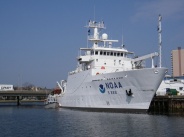NOAA: All Federal Waters of the Gulf Once Closed to Fishing Due to Spill Now Open
More than 1,000 square miles opened today
The Commerce Department's National Oceanic and Atmospheric Administration (NOAA) today reopened to commercial and recreational fishing 1,041 square miles of Gulf waters immediately surrounding the Deepwater Horizon wellhead, just east of Louisiana. This is the twelfth and final reopening in federal waters since July 22, and opens all of the areas in Federal waters formerly closed to fishing due to the Deepwater Horizon oil spill.
This reopening was announced after consultation with the U.S. Food and Drug Administration and under a reopening protocol agreed to by NOAA, the FDA, and the Gulf states.
“I am pleased to announce that all federal waters affected by the spill are now open to all fishing,” said Jane Lubchenco, Ph.D., under secretary of commerce for oceans and atmosphere and NOAA Administrator. “I thank fishermen and the public for their patience and FDA for its support and cooperation throughout this process while we worked diligently to ensure the integrity of Gulf seafood.”
NOAA sampled this area between November 11 and November 14, 2010, March 12 and March 16, 2011, and March 28 and April 1, 2011, for potentially affected finfish, including tuna, swordfish, and escolar. Read more in NOAA press release









